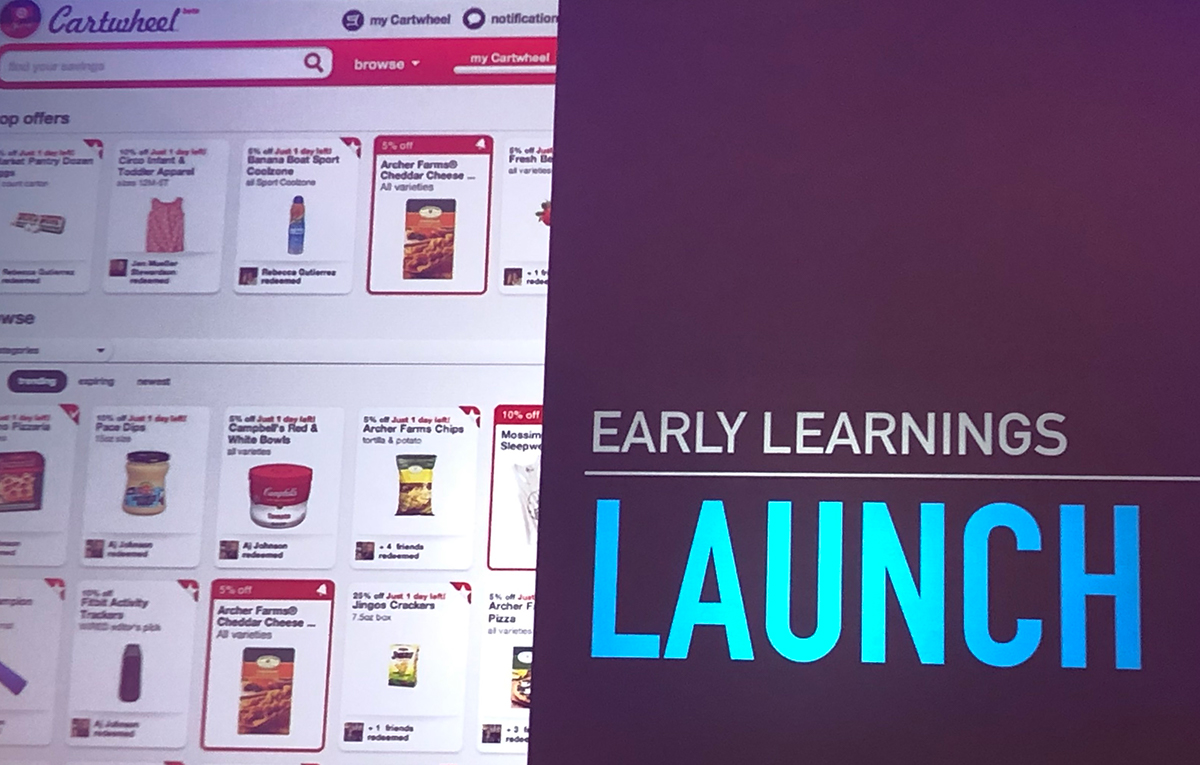4 Key Trends for Retail Success in 2019 and Beyond
Retail is undergoing a sea change. So it’s no surprise that retailers and brands everywhere are seeking strategies to help them anticipate future changes and avoid being a casualty of industry disruption.
As the industry gears up for this year’s major shopping events—Mother’s Day, Dads and Grads, Back to School, and Black Friday—many retailers are proactively working on innovative ways to increase growth. This was evident at the eTail West 2019 conference, where we heard from brand managers and startup entrepreneurs alike, who shared their strategies for success. During many insightful sessions, four major themes repeatedly emerged. These key strategies will surely make a difference for retail in the nearterm. How would you rate your company’s progress toward implementing them?

-
Understanding the (many) customer journeys is critical.
A constantly growing array of screens, devices, and touchpoints means the customer journey is more complex than ever before. Retailers that want to leverage customer journey data in this environment have two big challenges:
- They have to map the multitude of customer journeys, (a massive undertaking without the proper tools), and
- Those journeys need to be analyzed to identify the most productive customer paths for further engagement.
Understanding the customer journey is crucial for pinpointing business priorities and honing marketing tactics. Various presenters offered insights on how they approach customer journey mapping:
-
Focus on the unique aspects of your customer journeys:
If your company doesn’t have the specialized tools or skills to map all journeys, John Hazen, Chief Digital Office of Boot Barn, suggested focusing instead on mapping out the pieces unique to your business. Much of the ecommerce journey is commoditized, so it’s strategically savvy to concentrate on what’s particular to your business and focus there for customer journey innovation.
-
Find the major falling-off points and focus there:
Indy Guha of Signifyd talked about how retailers can get caught up in the need for one-to-one personalization, which assumes there’s no low-hanging fruit elsewhere in the customer journey. To improve customer experiences overall, examine end-to-end customer journeys and see where they “drop off” or quit interacting. Then take steps to make the most impact.
-
Take a step back:
Besides looking at data, Tom Nolan of Kendra Scott proposes really trying to see the customer experience through your customers’ eyes. Avoid looking at it solely through a marketing perspective.
 Kohl’s plans for a seamless, personalized customer journey in the future.
Kohl’s plans for a seamless, personalized customer journey in the future. -
Omnichannel strategy is not one size fits all.
Omnichannel is the execution of a frictionless customer experience—now possible because retailers can capture data at every point of their customer interactions. However, many retailers find omnichannel difficult because they’re unable to effectively stitch together data and activate that data along all customer touchpoints. However, getting started or taking the next step with omnichannel strategy doesn’t have to be a struggle. Here are a few takeaways from retailers making progress:
-
Don’t forget store operations as a key channel:
According to Amanda Kendrick from the Pep Boys, “Alignment with store operations is critical to delivering on omnichannel engagement—store employees are the last people customers will interact with for any campaign.”
-
Be channel agnostic, over-index on mobile:
Being channel agnostic is an important part of Home Depot’s omnichannel strategy according to Igor Cherny. He suggested starting every campaign by asking yourself, “How will this work online and in-store?” Right now, Home Depot is concentrating on its omnichannel strategy with mobile as the number one focus.
-
Augment experiences with technology:
Kathryn Money, from the jewelry company Brilliant Earth, says many companies are learning that technology is a helpful tool, but nothing can replace the human connection. For Brilliant Earth, keys to success have included focusing on customer education, emphasizing a low pressure environment, and providing an upscale and relaxed store atmosphere.
-
Be creative and tailor campaigns to channel:
Michelle Farabaugh of Harry and David offered some great omnichannel ideas using the company’s recent campaigns as examples, including Instagram stories and 360-degree videos, video interviews of employees, and influencer engagement.
-
Look ahead to mobile tracking (it’s a game-changer):
What will the omnichannel experience look like in 5 to 10 years? Panelists for the omnichannel retail session envision retailers will know every aspect of consumers’ shopping patterns in-store and online, largely due to increased mobile interactions. They also predicted the use of heat maps to show where customers are in the funnel and their intent at every stage.
 Harry and David uses various channels, including Instagram stories to drive audience engagement.
Harry and David uses various channels, including Instagram stories to drive audience engagement. -
-
Personalization is gaining traction.
Personalization was a major theme. A high degree of personalization leads to increased conversion rates and improved revenue. B2C companies that get personalization right are poised for major growth. In 2018, 70 percent of retailers focused on personalization—a number that’s certain to increase in the year ahead. Advice and lessons from retailers included:
-
Personalization helps retailers differentiate:
Greg Revelle, the CMO of Kohl’s, discussed how the company is moving heavily into personalization. “Personalization is one of the primary ways Kohl’s is differentiating itself from the competition.” Three reasons for this include:
- Customer expectations are changing,
- Personalization will help Kohl’s develop an emotional connection with its customers, and
- Data shows strong ROI for personalization.
-
Time-based and gamified personalization is growing:
In the future, Kohl’s wants to deliver on-the-fly offers to customers, including time-based offers with very short expirations of, say, 5 minutes. Kohl’s is also looking at gamified learning, which rewards users who follow certain paths and collects data to deepen customer profiles.
-
Tracking unique usage patterns encourages repeat purchases:
Beth Monda talked about how Beautycounter calculates personal use-through rate for cosmetics. Knowing this data, the company times reminder emails to fit customers’ unique usage patterns rather than a generic, blended average. And Tommy Lamb, an ecommerce and CRM consultant for Teleflora, discussed the company’s strategy for driving repeat purchases. Key components include gift-with-purchase coupons strategically timed based on a customer’s purchase history.
-
Customer-centricity and customer data management are strategic priorities:
Understanding customers and using customer data is now a strategic advantage for leading companies. A panel of VC presenters agreed that Amazon has raised the stakes for personalization. Customers expect targeted, smart offers. How to compete with Amazon?
- Personalization and customer-centricity is key. Stitch Fix is a great example.
- Another strategy that works is offering unique, one-of-a-kind products, like Etsy.
- Kohl’s is moving from pools of customer data (data subsets) to data supersets, which include “everything we know about the customer.” This tactic is often implemented by a customer data platform (CDP).
 Personalized, time-based offers are coming to Kohl’s.
Personalized, time-based offers are coming to Kohl’s. -
-
Brick-and-mortar stores can be a competitive advantage (if used right).
With online retail growing and store closures increasing, retailers need to find ways to turn physical locations into a competitive advantage versus an expensive liability. Here are ways companies are ensuring their stores are assets:
-
Feature Buy Online Pick-up in Store (BOPIS):
According to John Hazen of Boot Barn, 2018 was the year of BOPIS (Buy Online, Pick-up in Store). In this environment, companies with brick-and-mortar stores have an advantage over those that are strictly online.
-
Look to increase in-store sales for BOPIS customers:
Igor Cherny, VP of Online, Marketing and Merchandising Technology for Home Depot, noted that BOPIS is helpful for increasing total transactions sales—25 percent of customers who buy online for in-store pickup end up purchasing additional items in-store after they arrive.
-
Leverage stores for audience connection:
Greg Fancher, previously of LuluLemon, shared how the brand (and retailer) gained traction in the early days by combining yoga classes, socializing, and retail. (Fancher is now SVP & Chief Information Officer of Express.)
-
Add value via mobile apps, which tie to the store:
Target developed a couponing app, “Cartwheel,” which was downloaded 40 million times, used by 27 million shoppers, and saved around $1B via those coupons (verus $600M the previous year), according to Express’s Fancher.
-
Use stores for testing:
Some retailers are using brick-and-mortar stores as a place to test new concepts and get closer to their customers.
- ThirdLove is experimenting with pop-up stores. These temporary locations are used like a digital channel, helping the company to learn and adjust strategies in alignment with customer buying habits.
- During the development of Boot Barn’s boot selection guide, the company piloted the new design in-store and collected data to improve it before the online launch.
-
Embrace experiential retail:
Experiential retail is a purposeful use of space for experiencing products, engaging customers with the brand, and providing them with excellent customer service. It’s not about setting up random installations like ball pits, according to Vibhu Norby, Co-Founder & CEO of b8ta.
-
 Target launched Cartwheel to improve the couponing experience and to draw people to stores.
Target launched Cartwheel to improve the couponing experience and to draw people to stores.Never stop innovating
Retail is a heavily disrupted industry that’s getting more competitive every year. As major shopping events approach, it’s imperative that retailers proactively implement new tactics to attract and keep customers. That means understanding and improving the customer journey, making each channel work together seamlessly, delivering meaningfully personalization, and using brick-and-mortar stores a strategic asset.
Learn how customer data management can help
To learn about how integrated retailer Muji used a CDP to better understand its customers and create a seamless omnichannel experience, read the Muji omnichannel story.


 Personalized, time-based offers are coming to
Personalized, time-based offers are coming to